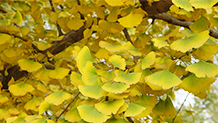Phenotypic VariationDiversity in Fruit, Leaf, Fatty Acid,Their Relationships to Geoclimatic Factors in Seven Natural Populations of Malania Oleifera Chun et S.K. Lee.
作者:Li HG, Wa 时间:2023-04-16
Malania oleifera Chun et S.K. Lee is an endangered woody oil tree that produces nervonic acid, which is closely related to brain development. The phenotypic variationdiversity in some representative traits in natural populations are poorly understood. To investigate phenotypic variation, diversitytheir relationship with geoclimatic factors, we evaluated 21 traits of 97 sampled individuals from seven natural populations. Coefficient of variation for 21 traits widely ranged from 0.05 (shape index of fruit) to 0.62 (water content of dry kernel), with an average of 0.18. The Shannon–Wiener indices ranged from 1.91 (water content of dry kernel) to 2.06 (leaf lengthleaf width), with an average of 1.94. The variation of 20 traits was significantly influenced by the population effect (p < 0.05). The 21 traits were reduced to six principal components, which collectively accounted for 86.64% of the total phenotypic variation. The seven population was mainly dividedtwo groups: Group I, which included four populations distributed throughout the southern regionhaving widershorter leaves, larger fruit transverse diameters,higher content of fatty acidnervonic acid in the kernel,Group II included the left populations with relative opposite characteristics to those in Group I. Trees with shorter leaves tend to produce oblate shapeheavier dried kernel, yielding more fatty acidnervonic acids,population-level pairwise kernel morphological distance were positively correlated with fatty acid distance (Mantel r = 0.39, p < 0.05). Annual average humidity was strongly positively correlated with leaf index (length/width, r = 0.78) but had a negative correlation with the kernel dry weight (r = −0.84). The shape of the kernel gradually altered from oblate to globose as longituderainfall increased. The environment became colder as latitude increased, resulting in a steady decrease in fatty acid content. No significant isolation by climaticgeographical distance was found for morphologicalfatty acid variability. These results can have an important implication for genetic improvement, diversity conservationresource management of the species in the future.










